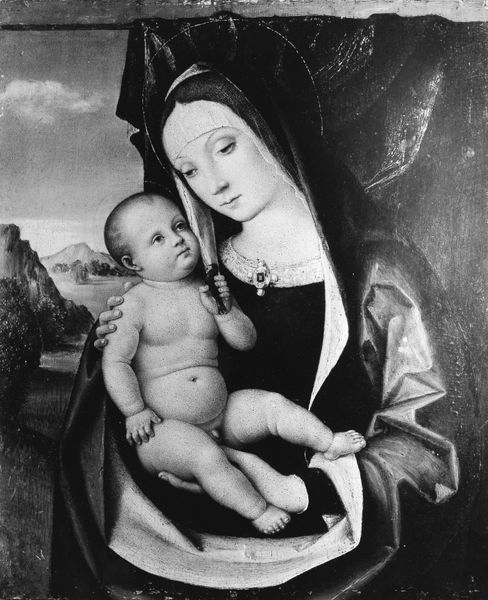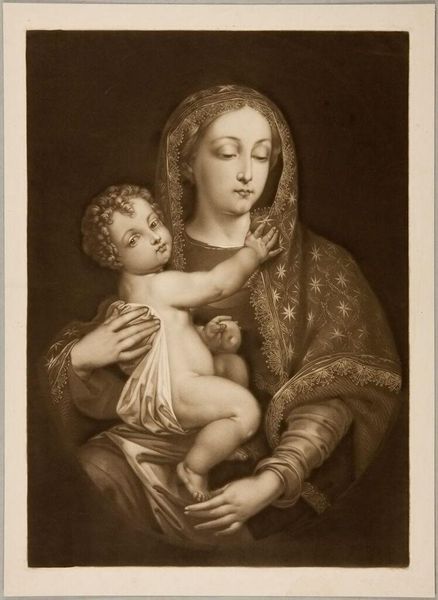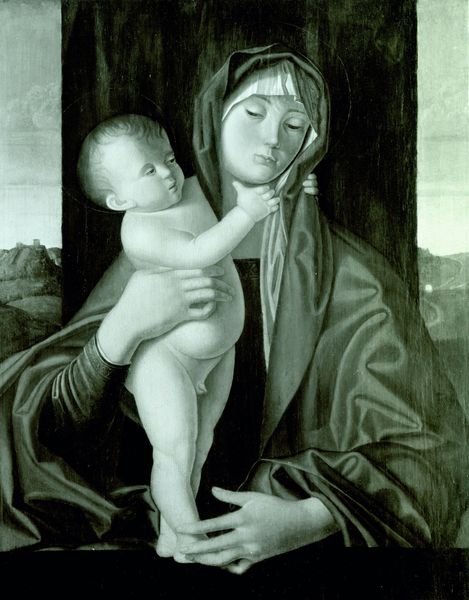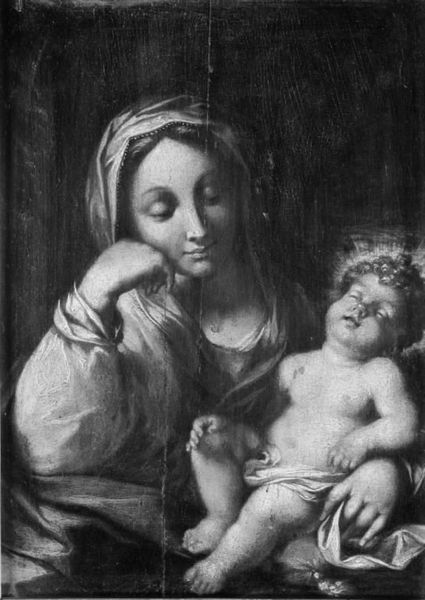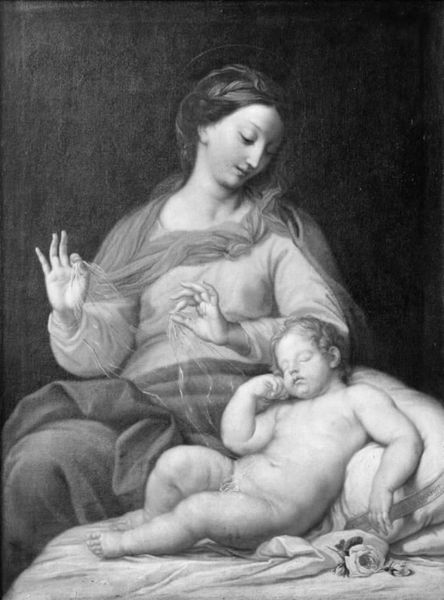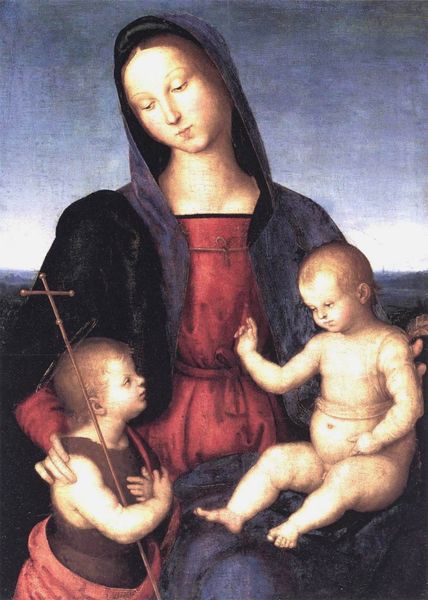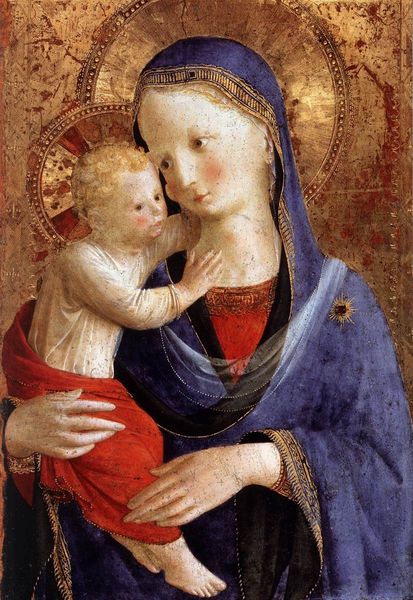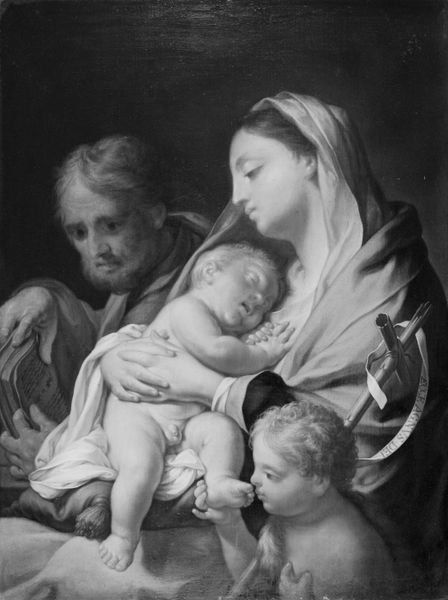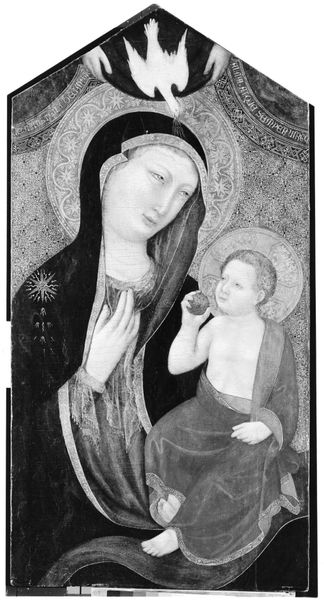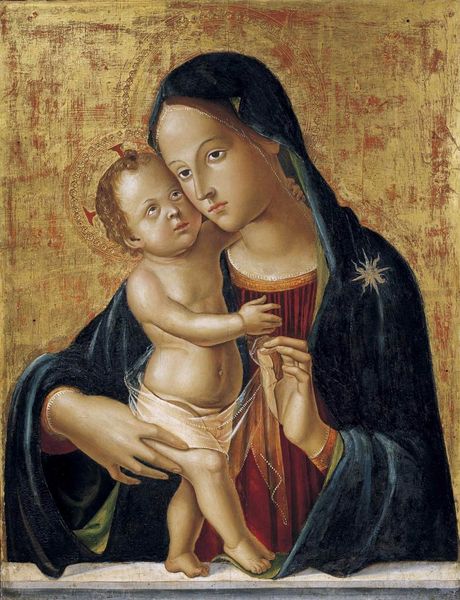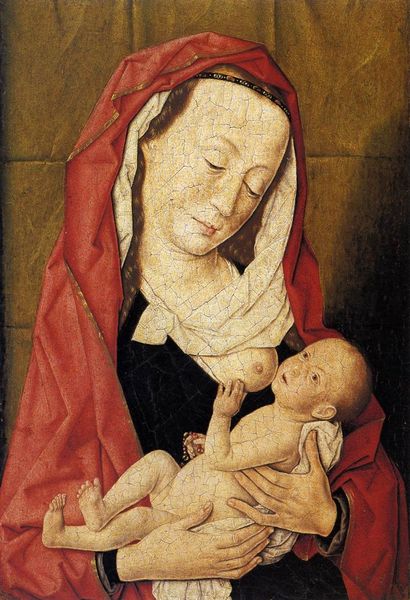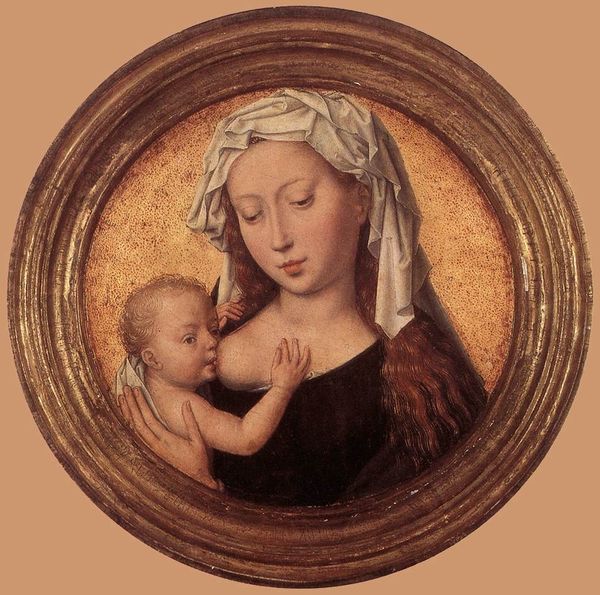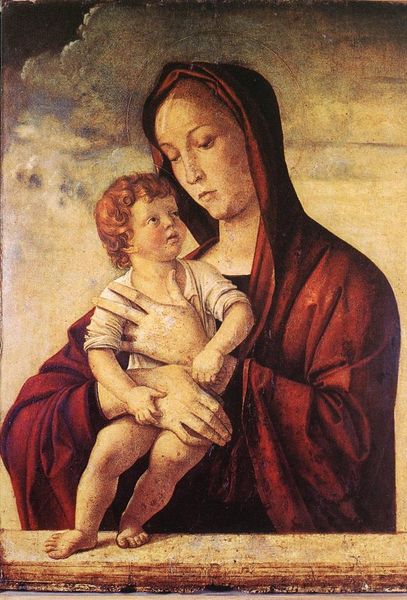
painting, oil-paint
#
portrait
#
portrait image
#
portrait
#
painting
#
oil-paint
#
landscape
#
figuration
#
northern-renaissance
Dimensions: 46.7 × 31.3 cm (18 3/8 × 12 5/16 in.) Painted surface: 45.4 × 30.2 cm (17 7/8 × 11 3/4 in.)
Copyright: Public Domain
Curator: What strikes me first about this “Virgin and Child” is the intensity of her gaze. Adriaen Isenbrant, a Netherlandish painter working around 1520 to 1550, really captured the Madonna’s poignant, almost melancholic expression. Editor: It’s all very muted. Even the textiles look flat, stiff. Oil paint was precious, yes, but where’s the luxurious display of pigment that we see in some contemporary works? It feels austere. Curator: I read it differently. The subdued palette perhaps draws us closer to the internal world. Consider the objects on the table: a simple meal laid out. Each element holds layers of symbolic meaning, from sustenance to sacrifice. Even the floral patterned tapestry hanging behind carries symbolic weight— a motif suggesting the enclosed garden or *hortus conclusus* often associated with Mary’s purity. Editor: Perhaps. I’m wondering about the materials used for this sort of devotional piece. Was Isenbrant stretching his own canvases, grinding his pigments? These northern Renaissance artists relied heavily on workshop collaboration and specialized labor, it wasn't just divine inspiration! How did the material realities shape the outcome and impact its perceived value? Curator: Absolutely, the workshop practices would have informed the creation deeply, even the symbolic interpretation! Think about the apple clutched in the child's hand - redemption from the Fall. The breast being offered - salvation, but there’s an undeniable maternal tenderness also at play. It becomes both universal and incredibly personal. Editor: Well, if we really think about consumption, who was the patron here? A wealthy merchant perhaps, eager to display their piety through tangible, materially sound objects like this. What about their religious experience differed in turn due to art's materiality? That’s what truly enriches our understanding of this painting, and its position at the intersection of labor, economy, and devotion. Curator: I think we can appreciate it both for its devotional symbolism, and for what it represents materially – spiritual nourishment rendered in earthly pigments, laboriously crafted. It's a work that continues to yield insight, no matter our approach. Editor: Exactly. These close looking moments remind us about the very human dimensions involved in portraying a deity, which offers a richer look into our shared human history.
Comments
No comments
Be the first to comment and join the conversation on the ultimate creative platform.

